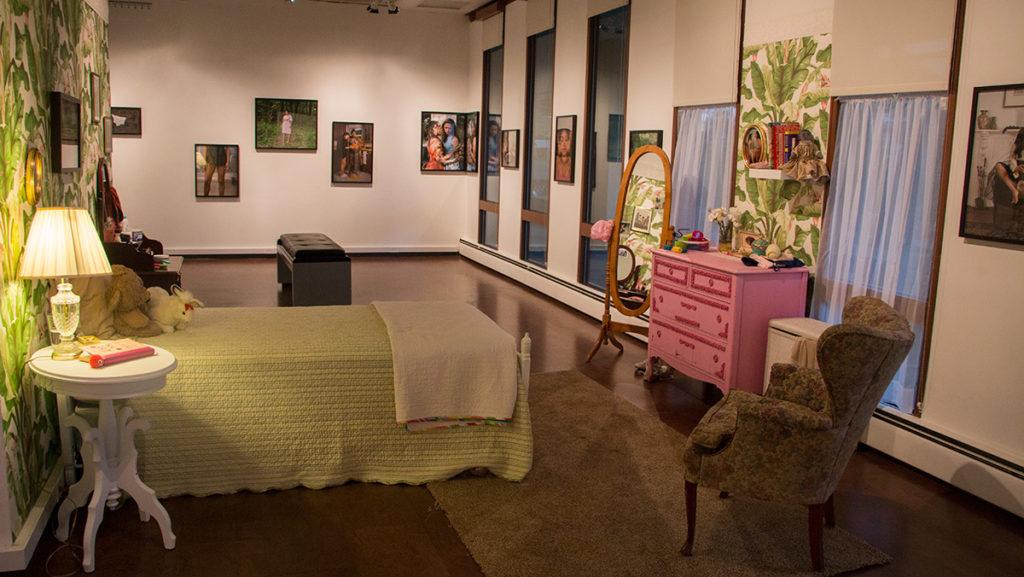In 2013, Nydia Blas ’11 connected with a group of young women of color at the Southside Community Center in Ithaca who voiced a desire for a space to talk about issues in their lives.
Blas created a girls group at the community center and grew close to them, and she decided to feature them as the subject of a photo series she calls “The Girl Who Spun Gold.”
Three years later, Blas presented this series to a group of over 60 community members on Sept. 22 at the Handwerker Gallery. Her exhibit attempted to portray notions of sexuality, racism and gender discrimination through the lives of the girls.
One of the reasons Blas said she created the series was to stir conversations about subjects like sexuality that may be uncomfortable to talk about. Blas also said she wanted to push the need for acceptance and celebration of people’s differences, which is why she put emphasis on the range of body types and skin hues of the girls in the photos.
An art exhibition in the Handwerker Gallery also displays Blas’ photographs in gold frames on the walls as well as a journal entry written by one of the subjects of the series and a remake of Blas’ childhood bedroom.
Nia Nunn, assistant professor in the Department of Education at Ithaca College and childhood friend of Blas’, said she is appreciative of the response and inspiration that the series has created.
“What makes me so happy are the ways in which it has an impact on so many students,” Nunn said. “I’m particularly grateful for the response and reactions of the many black and brown women on campus. Just the idea of having a space that resembles them on campus is significant and always necessary.”
Ithaca local Diana Ozolins, who taught Blas when she attended the Lehman Alternative Community School in Ithaca, said Blas’ work had a profound impact on her.
“I’m so filled with awe and amazement,” said Ozolins. “This work is incredible. She’s done some really amazing things.”
Freshman Nadia Racaniello reflected on the emphasis that Blas’ series put on female sexuality.
“I really like the inspiration of female sexuality because it’s not widely recognized in society,” she said. “There was a sense of compassion and empathy with these women of color because they have gone through such trials and tribulations. The series portrayed double minorities shown in a really empowering and beautiful light.”







